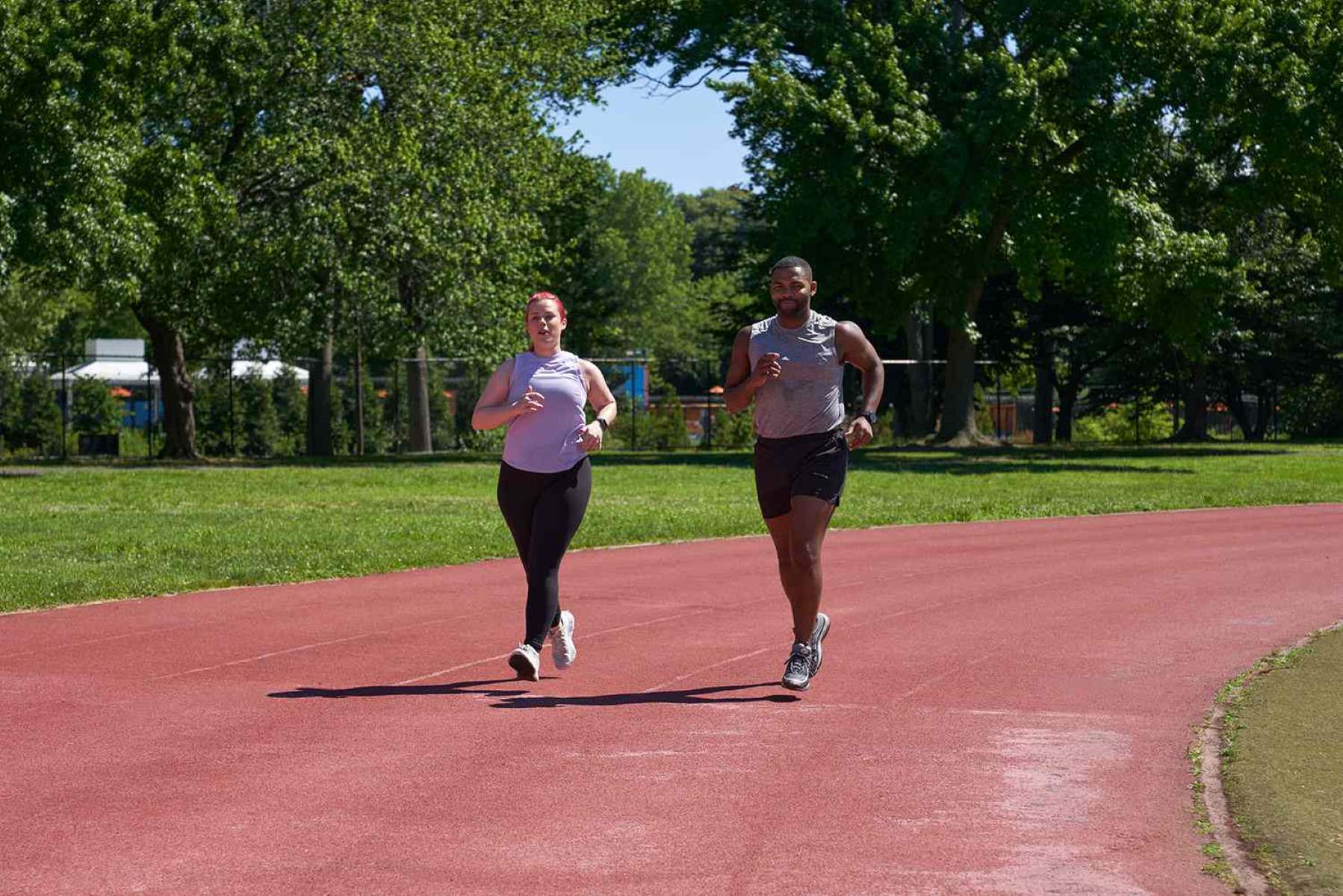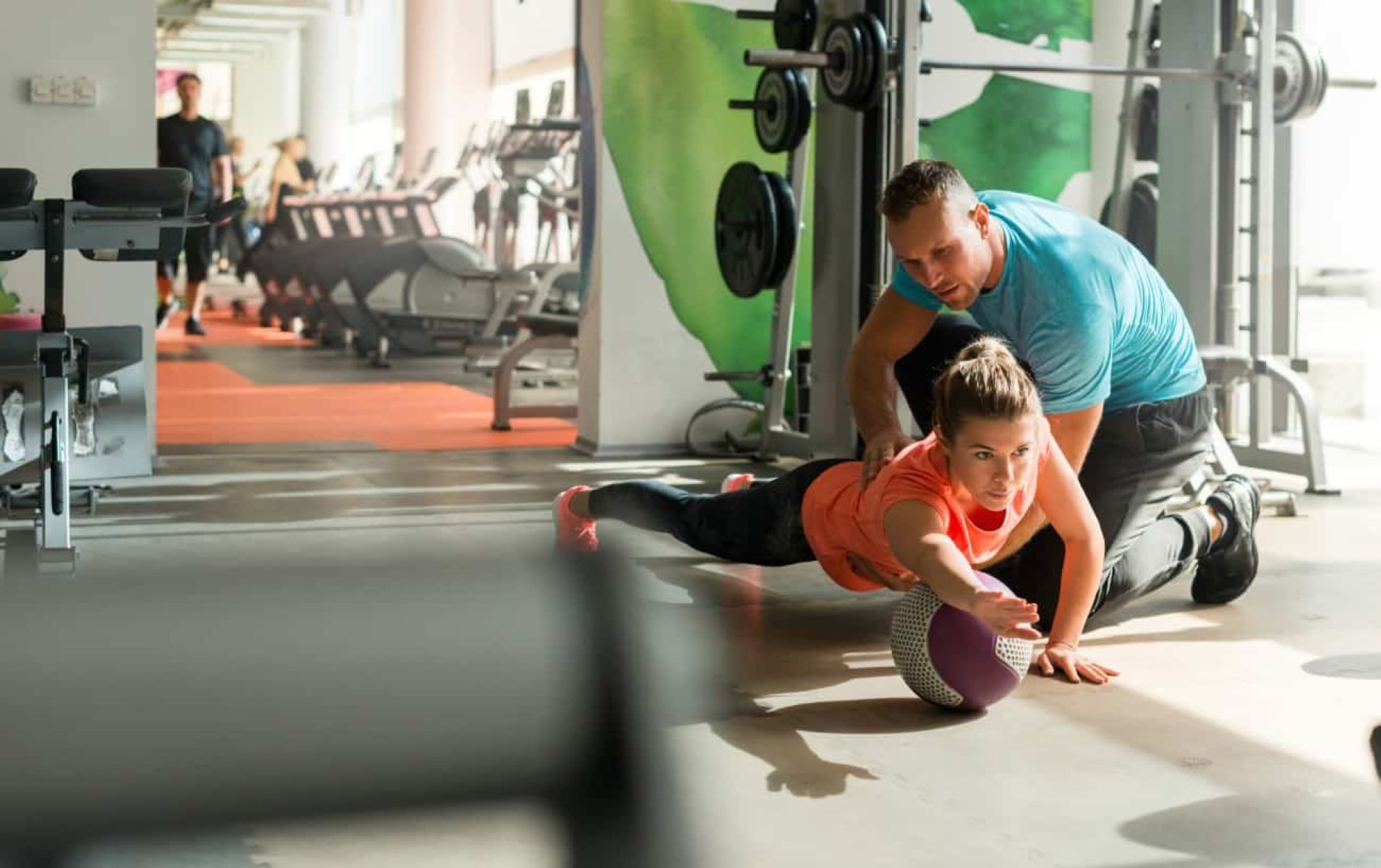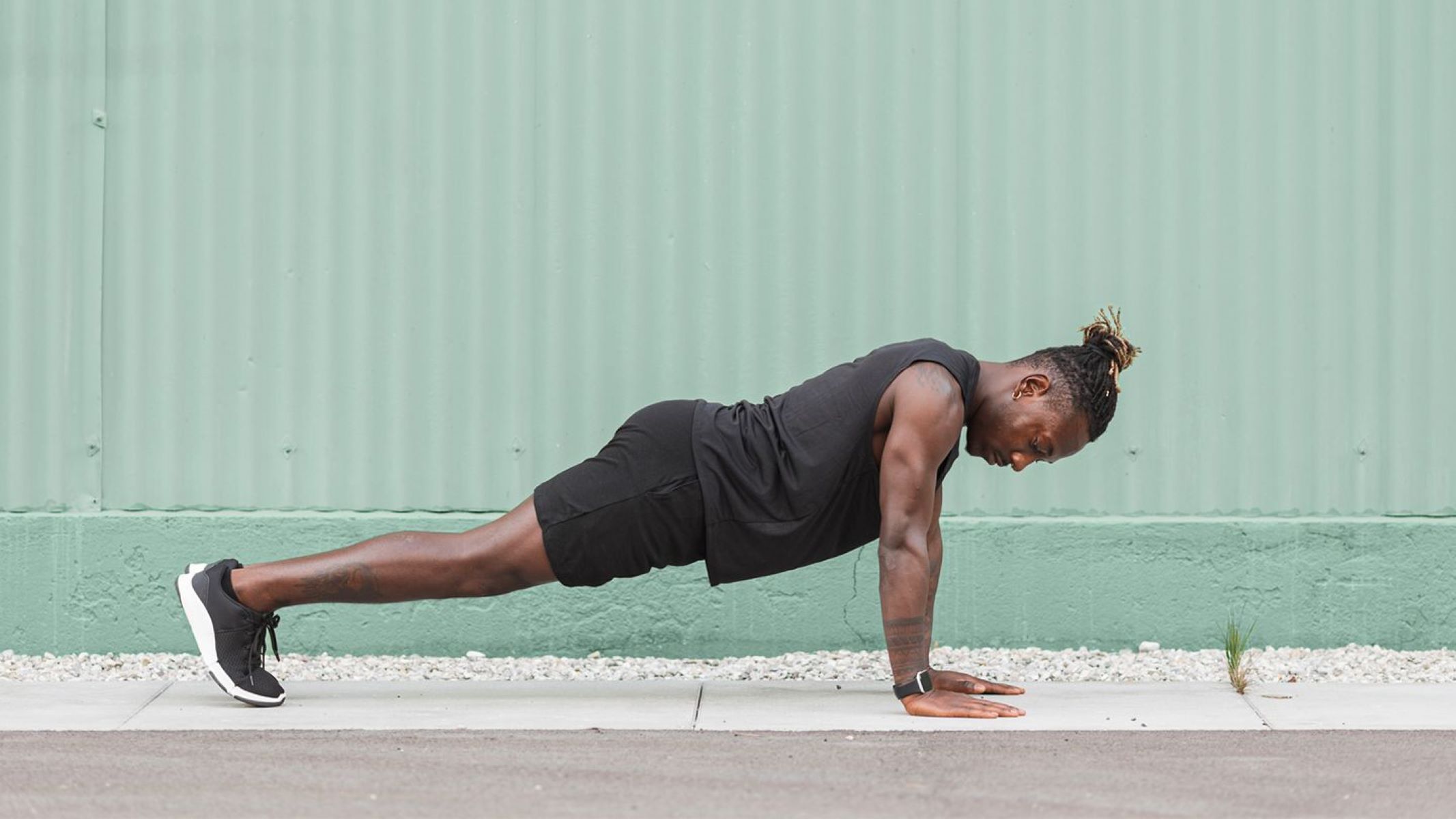

Featured
How To Build Up Cardiovascular Endurance
Modified: January 22, 2024
Build up your cardiovascular endurance with our featured workout routines and training tips. Improve your stamina and increase your overall fitness level.
Introduction
Welcome to our comprehensive guide on how to build up cardiovascular endurance! Whether you’re an athlete looking to enhance your performance or an individual seeking to improve your overall fitness levels, cardiovascular endurance is a crucial aspect to focus on. Cardiovascular endurance refers to the ability of the heart, lungs, and circulatory system to deliver oxygen-rich blood to the working muscles during prolonged physical activity.
However, building cardiovascular endurance is not a quick or easy process. It requires consistency, dedication, and a well-planned training program. In this guide, we will take you through the essential steps to effectively improve your cardiovascular endurance.
By increasing your cardiovascular endurance, you will experience a wide range of benefits. Not only will you be able to engage in physical activities for longer durations, but you will also notice improvements in your daily energy levels, cardiovascular health, and overall fitness. Additionally, building cardiovascular endurance can help with weight management, stress relief, and even reduce the risk of chronic diseases such as heart disease, diabetes, and obesity.
Before diving into the training strategies and exercises, it’s important to understand the factors that affect cardiovascular endurance. Various factors, such as genetics, age, sex, and your current fitness level, can influence how quickly you can improve your cardiovascular endurance. Additionally, it’s essential to assess your current fitness level to determine the starting point for your training program. This will ensure that your workouts are appropriately challenging yet manageable.
In the next sections of this guide, we will delve deeper into assessing your current fitness level, creating a cardiovascular endurance plan, choosing suitable exercises, and monitoring your progress. We will also provide tips to help you stay motivated throughout your fitness journey and highlight common mistakes to avoid.
Are you ready to take your cardiovascular endurance to the next level? Let’s get started on this exciting journey of building a strong and resilient cardiovascular system!
Benefits of Cardiovascular Endurance
Improving your cardiovascular endurance offers a wide range of benefits for both your physical and mental well-being. Let’s explore some of the key advantages:
1. Increased Energy Levels: Building cardiovascular endurance allows your body to efficiently deliver oxygen and nutrients to your muscles. As a result, you’ll experience enhanced energy levels throughout the day, enabling you to take on physical tasks with greater ease.
2. Improved Heart Health: Engaging in regular cardiovascular exercise helps strengthen your heart muscle and improves its ability to pump blood. This reduces the risk of heart diseases such as heart attacks, high blood pressure, and strokes.
3. Weight Management: Cardiovascular exercise is an effective way to burn calories, helping you maintain a healthy weight or aid in weight loss. It boosts your metabolism and promotes the burning of stored body fat, leading to a leaner physique.
4. Reduced Risk of Chronic Diseases: Regular cardiovascular exercise has been linked to a reduced risk of chronic conditions such as diabetes, obesity, and certain types of cancer. It helps regulate blood sugar levels, lowers blood pressure, and improves insulin sensitivity.
5. Increased Stamina and Endurance: Building cardiovascular endurance enhances your stamina and endurance levels, allowing you to engage in physical activities or sports for longer periods without feeling fatigued. This can benefit both athletes and individuals seeking to improve their overall fitness.
6. Stress Relief: Cardiovascular exercise has a profound impact on your mental well-being, releasing endorphins that help reduce stress, anxiety, and depression. It serves as a natural mood booster, promoting feelings of happiness and relaxation.
7. Improved Sleep Quality: Regular exercise, particularly cardiovascular workouts, can help regulate sleep patterns and improve the quality of your sleep. It enhances your ability to fall asleep faster and facilitates deeper, more restorative sleep.
8. Enhanced Cognitive Function: Engaging in cardiovascular exercise improves blood flow to the brain, increasing oxygen and nutrient delivery. This leads to enhanced cognitive function, including better memory, focus, and overall mental clarity.
By incorporating cardiovascular endurance training into your fitness routine, you can reap these incredible benefits and significantly improve your overall well-being. So, let’s move on to the next section, where we will explore the factors that affect cardiovascular endurance.
Factors Affecting Cardiovascular Endurance
Several factors can influence an individual’s cardiovascular endurance and their ability to improve it. By understanding these factors, you can tailor your training program to maximize your results. Let’s take a look at some of the key factors:
1. Genetics: Genetics play a significant role in determining an individual’s baseline cardiovascular endurance. Some people may naturally have a higher aerobic capacity and a greater ability to improve their endurance compared to others. However, it’s essential to remember that everyone can improve their cardiovascular endurance through proper training and consistent effort.
2. Age: Age is another factor that can impact cardiovascular endurance. As we age, our aerobic capacity tends to decline naturally. However, engaging in regular cardiovascular exercise can help slow down this decline and maintain or even improve endurance levels.
3. Current Fitness Level: Your current fitness level is a crucial factor to consider when improving cardiovascular endurance. If you’re already moderately fit, you may progress more quickly compared to someone who is just starting their fitness journey. However, even if you’re starting from a lower fitness level, you can still achieve significant improvements by gradually increasing the intensity and duration of your workouts.
4. Training Consistency: Consistency is key when it comes to building cardiovascular endurance. Regularly engaging in cardiovascular exercise allows your body to adapt and become more efficient at utilizing oxygen and delivering it to your muscles. Aim for a consistent exercise routine, ideally incorporating at least three to five days of cardiovascular training per week.
5. Training Intensity: The intensity of your workouts directly affects your cardiovascular endurance. To challenge your heart and lungs, it’s important to incorporate a mix of moderate-intensity steady-state workouts and higher-intensity interval training (HIIT). Finding the right balance between these two types of training can help you improve both your aerobic and anaerobic endurance.
6. Nutrition and Hydration: Proper nutrition and hydration are integral to improving cardiovascular endurance. Ensure you’re fueling your body with a well-balanced diet, including adequate carbohydrates for energy and lean proteins for muscle repair and recovery. Stay hydrated before, during, and after your workouts to optimize performance and support essential bodily functions.
7. Rest and Recovery: Adequate rest and recovery are often overlooked but essential components of building cardiovascular endurance. Plan regular rest days to allow your body to recover and adapt to the training stimulus. Quality sleep is also crucial for optimal performance and recovery.
By considering these factors and making appropriate adjustments to your training program and lifestyle, you can optimize your efforts in building cardiovascular endurance. In the next section, we will discuss how to assess your current fitness level to create an effective training plan.
Assessing Your Current Fitness Level
Before embarking on a cardiovascular endurance training program, it’s essential to assess your current fitness level. This will help you determine your starting point and set realistic goals for your progress. Here are some key methods for assessing your fitness level:
1. Physical Activity History: Start by evaluating your history of physical activity. Take note of any regular exercise or sports you have participated in, as well as any injuries or limitations that may affect your training. This will provide a baseline understanding of your previous fitness level.
2. Resting Heart Rate: Measure your resting heart rate, which is the number of times your heart beats per minute when you’re at rest. A lower resting heart rate typically indicates a higher level of cardiovascular fitness. You can measure this by placing two fingers on your wrist or neck and counting the pulse for 60 seconds first thing in the morning.
3. Maximum Heart Rate: Calculate your maximum heart rate to determine your exercise intensity zones. The common formula is to subtract your age from 220. This will give you an estimate of your upper heart rate limit during vigorous exercise.
4. Cardiorespiratory Fitness Test: Perform a cardiorespiratory fitness test to assess your aerobic capacity. The most common test is the 1.5-mile run, where you aim to complete the distance as fast as possible. Another option is the 6-minute walk or the 12-minute run/walk tests. These tests provide valuable information about your current cardiovascular fitness level.
5. Perceived Effort Test: Use a rating of perceived exertion (RPE) scale during exercise to estimate your effort level. The Borg Scale is commonly used, ranging from 6 to 20, with 6 being no exertion and 20 being maximal effort. This self-assessment can help you gauge the intensity of your workouts and adjust them accordingly.
6. Functional Movement Assessment: Evaluate your movement patterns and joint mobility through a functional movement assessment. This can identify any imbalances or limitations that need to be addressed to prevent injury and optimize performance. Seek guidance from a fitness professional or physiotherapist for a comprehensive assessment.
7. Body Composition Analysis: Assess your body composition to determine the ratio of lean muscle mass to body fat. This can be done through various methods such as bioelectrical impedance, skinfold measurements, or DEXA scans. Understanding your body composition can help set realistic goals and track your progress accurately.
By utilizing these assessment methods, you can gain valuable insights into your current fitness level and tailor your training program accordingly. Keep in mind that these assessments are a starting point, and regular re-assessment is crucial to track your progress and make adjustments as needed. Now that you have a clear understanding of your baseline fitness level, let’s move on to creating a personalized cardiovascular endurance plan.
Creating a Cardiovascular Endurance Plan
Now that you have assessed your current fitness level, it’s time to create a personalized cardiovascular endurance plan. A well-designed plan will gradually improve your cardiovascular fitness and help you achieve your fitness goals. Here are the key steps to creating an effective plan:
1. Set Specific Goals: Start by setting specific goals for your cardiovascular endurance training. Whether it’s running a certain distance, completing a race, or simply improving your overall endurance, having clear goals will give you direction and motivation throughout your training journey.
2. Consider Your Schedule: Take into account your available time and schedule when creating your endurance plan. Determine how many days per week you can dedicate to cardiovascular exercise and the duration of each session. Aim for consistency and gradually increase your workout volume over time.
3. Introduce Variety: Incorporate a variety of cardiovascular exercises into your plan to keep things interesting and challenge different muscle groups. This can include activities such as running, swimming, cycling, rowing, or aerobics. Mixing up your workouts will prevent boredom and provide a well-rounded training stimulus.
4. Gradually Increase Intensity: Begin with moderate-intensity workouts and gradually increase the intensity as your fitness improves. This can be done by increasing your pace, distance, or duration. Avoid pushing yourself too hard too soon, as it may lead to injuries or burnout. Progress gradually and listen to your body.
5. Include Interval Training: Integrate interval training into your endurance plan. Interval training involves alternating between high-intensity bursts of exercise and periods of active recovery. This method has been shown to improve both aerobic and anaerobic capacity, enhancing overall cardiovascular endurance.
6. Incorporate Long-Distance Workouts: Plan long-distance workouts to further improve your endurance. These sessions should be performed at a low to moderate intensity but for an extended duration. Long-distance workouts help train your body to sustain aerobic efforts for a prolonged period, building up your cardiovascular capacity.
7. Cross-Train and Strength Train: Supplement your cardiovascular training with cross-training activities and strength training exercises. Cross-training helps prevent overuse injuries and provides a well-rounded fitness foundation. Strength training, in particular, improves muscular endurance and supports overall performance during cardiovascular activities.
8. Allow for Rest and Recovery: Don’t forget to incorporate rest days into your training plan. Rest and recovery are crucial for your body to adapt and improve. Use rest days for gentle activities, stretching, or low-impact workouts to aid in the recovery process.
9. Monitor Your Progress: Keep track of your workouts, including distance, time, and perceived effort level. Regularly assess your progress, whether it’s through timing your runs, measuring the distance covered, or using fitness tracking devices. This will help you stay motivated and identify areas for improvement.
By following these steps and tailoring your plan to your specific fitness level and goals, you will be well on your way to building up your cardiovascular endurance. As you progress and become more confident in your abilities, remember to reevaluate and modify your plan as necessary. Now, let’s move on to the next section, which focuses on choosing suitable cardiovascular endurance exercises.
Choosing Suitable Cardiovascular Endurance Exercises
When it comes to building cardiovascular endurance, choosing the right exercises is essential. The exercises you select should challenge your cardiovascular system and align with your fitness level and personal preferences. Here are some factors to consider when choosing suitable cardiovascular endurance exercises:
1. Low-Impact vs. High-Impact Exercises: Consider your joint health and any existing injuries when selecting exercises. Low-impact exercises, such as swimming, cycling, and elliptical training, are gentle on the joints and provide excellent cardiovascular benefits. High-impact exercises like running and jumping rope are more intense and may increase the risk of joint stress or injury.
2. Individual Preferences: Choose exercises that you enjoy and find motivating. If you dread a particular activity, you’re less likely to stick with it long-term. Experiment with different activities until you find ones that bring you joy and keep you engaged throughout your workouts.
3. Variety and Cross-Training: Incorporate a variety of cardiovascular exercises into your routine. This not only prevents boredom but also provides a well-rounded training stimulus. Cross-training, such as adding in swimming or cycling alongside running, can help improve endurance while reducing the risk of overuse injuries.
4. Gradual Progression: Start with exercises that are manageable for your current fitness level and gradually progress to more challenging activities. For example, if you’re new to running, start with a combination of walking and jogging before progressing to continuous running. Gradual progression allows your body to adapt and reduces the risk of injury.
5. Interval Training: Include interval training in your routine to improve cardiovascular endurance. This involves alternating periods of high-intensity exercise with periods of active recovery. Examples include alternating sprints with slow jogs or cycling at a fast pace followed by a lighter effort. Interval training is time-efficient and can significantly boost your endurance capacity.
6. Continuous Aerobic Exercise: Engage in continuous aerobic exercises that elevate your heart rate and sustain it throughout the workout. Activities like brisk walking, jogging, swimming, cycling, and aerobic classes are excellent options. Perform these exercises at a steady pace that challenges your heart and lungs, but still allows you to carry on a conversation.
7. Outdoors vs. Indoors: Consider whether you prefer outdoor or indoor exercise. Many cardiovascular endurance exercises can be done both indoors and outdoors. Running or cycling outdoors can provide a change of scenery and fresh air, while indoor exercises such as treadmill running or stationary biking offer convenience and weather protection.
8. Group Classes or Solo Workouts: Decide if you prefer working out alone or in a group setting. Group exercise classes, such as indoor cycling, dance-based workouts, or aerobics, can provide a motivating and social environment. On the other hand, solo workouts allow flexibility and can be tailored to your specific needs and preferences.
9. Adaptability to Fitness Levels: Ensure that the exercises you choose can be adapted to your current fitness level and can be progressively intensified as you improve. For example, if you’re new to cycling, you can start with shorter rides at a comfortable pace and gradually increase distance and speed over time.
By considering these factors, you can choose cardiovascular endurance exercises that suit your needs, preferences, and goals. Remember to listen to your body and gradually increase the intensity and duration of your workouts. In the next section, we will explore how to effectively monitor and track your progress to ensure steady improvements in cardiovascular endurance.
Monitoring and Tracking Progress
Monitoring and tracking your progress is key to effectively improving your cardiovascular endurance. It allows you to assess your performance, make necessary adjustments, and stay motivated throughout your fitness journey. Here are some strategies for monitoring and tracking your progress:
1. Workout Journal: Keep a workout journal to record each exercise session. Include details such as the date, duration, distance, and intensity of your workouts. Additionally, note any factors that may have influenced your performance, such as weather conditions or how you felt during the workout. This journal serves as a valuable reference and helps you track your progress over time.
2. Fitness Tracking Devices: Utilize fitness tracking devices such as smartwatches or fitness apps to monitor your workouts. These devices can track metrics like heart rate, distance covered, calories burned, and even provide detailed performance analysis. They provide real-time feedback and help you gauge your progress and set new goals.
3. Time and Distance: Monitor the time and distance of your workouts. Set benchmarks and track your performance to see improvements over time. For example, if you’re a runner, monitor your pace per mile or kilometer and aim to gradually decrease the time it takes to complete a specific distance or increase the distance covered within a given time frame.
4. Perceived Exertion: Use the rating of perceived exertion (RPE) scale to assess your effort level during workouts. This scale measures how hard you feel your body is working on a scale from 1 to 10, with 1 being very light and 10 being maximum effort. Compare your perceived exertion over time to gauge improvements in your fitness level and adjust your training intensity accordingly.
5. Regular Fitness Assessments: Schedule regular fitness assessments to track specific indicators of cardiovascular endurance, such as VO2 max or the ability to sustain effort over time. These assessments can provide objective measurements of your progress and allow you to set new goals based on the results.
6. Performance Targets: Set performance targets that align with your goals. This could be completing a race, reaching a specific distance or speed milestone, or achieving steady improvements in your interval training sessions. Periodically evaluate your progress towards these targets and adjust your training plan as needed to stay on track.
7. Psychological Indicators: Pay attention to your mental and emotional states during and after workouts. Notice if you feel less fatigued, more energized, or experience improved mood and mental clarity. These psychological indicators can be powerful motivators and indicators of improved cardiovascular endurance.
8. Body Measurements and Composition: Track changes in your body measurements, such as waist or hip circumference, as well as changes in body composition. While cardiovascular endurance is not solely about weight loss, improvements in body composition can be a valuable indicator of progress.
By consistently monitoring and tracking your progress, you can celebrate your achievements, identify areas for improvement, and stay motivated on your journey to build cardiovascular endurance. Remember that progress is not always linear, and it’s important to listen to your body and make adjustments as needed. Now, let’s explore some valuable tips for building cardiovascular endurance effectively.
Tips for Building Cardiovascular Endurance
Building cardiovascular endurance requires consistency, dedication, and a well-rounded approach to training. Here are some valuable tips to help you effectively improve your cardiovascular fitness:
1. Start Slowly: If you’re new to cardiovascular exercise or returning after a break, start slowly and gradually increase the duration and intensity of your workouts. This allows your body to adapt and reduces the risk of injury.
2. Set Realistic Goals: Set realistic and achievable goals that align with your fitness level. Break down larger goals into smaller milestones to track your progress and stay motivated along the way.
3. Consistency is Key: Consistency is essential when it comes to building cardiovascular endurance. Aim for regular workouts, ideally three to five times per week, to maintain momentum and steadily improve your fitness levels.
4. Mix Up Your Workouts: Avoid doing the same workout routine day after day. Include a variety of cardiovascular exercises, such as running, cycling, swimming, or rowing, to challenge different muscle groups and prevent boredom.
5. Progressive Overload: Gradually increase the intensity, duration, or frequency of your workouts. This progressive overload stimulates adaptation and helps improve cardiovascular endurance over time.
6. Incorporate Interval Training: Integrate interval training into your workouts to boost aerobic and anaerobic capacity. Alternate between high-intensity bursts and periods of active recovery to challenge your cardiovascular system and improve overall endurance.
7. Maintain Proper Form: Pay attention to your form and technique during exercises. Proper posture and alignment can enhance efficiency and reduce the risk of injury, allowing you to push your cardiovascular limits safely.
8. Fuel Your Body: Prioritize proper nutrition and hydration to support your cardiovascular training. Fuel your body with a balanced diet, rich in carbohydrates for energy and lean proteins for muscle repair and recovery. Stay hydrated before, during, and after workouts to optimize performance and aid in recovery.
9. Allow for Rest and Recovery: Give your body enough time to rest and recover between workouts. This allows for muscle repair and adaptation, preventing overtraining and promoting long-term improvements in cardiovascular endurance.
10. Seek Professional Guidance: Consider working with a certified fitness professional or personal trainer who can design a customized training program tailored to your goals and abilities. They can ensure proper technique, provide guidance, and help you stay on track with your cardiovascular endurance journey.
Remember, building cardiovascular endurance takes time and dedication. Be patient with yourself and celebrate every milestone along the way. By incorporating these tips into your training routine, you’ll be well on your way to improving your cardiovascular fitness levels and reaping the many benefits it brings.
Common Mistakes to Avoid
When it comes to building cardiovascular endurance, it’s important to avoid common mistakes that can hinder your progress or lead to injury. Here are some common mistakes to be aware of and avoid:
1. Starting Too Fast, Too Soon: One of the most common mistakes is pushing yourself too hard at the beginning of your training journey. It’s important to start at a comfortable pace and gradually increase the intensity and duration of your workouts. This allows your body to adapt and reduces the risk of overuse injuries.
2. Neglecting Proper Warm-Up and Cool-Down: Skipping the warm-up and cool-down is a mistake that can lead to muscle strains, reduced performance, and delayed recovery. Warm-up exercises help increase blood flow and prepare your muscles for exercise, while cool-down exercises aid in recovery and prevent muscle soreness.
3. Not Listening to Your Body: Pay attention to signals from your body during workouts. Pushing through pain or ignoring signs of fatigue can lead to injuries. It’s important to differentiate between discomfort and pain. If something feels off or if you experience persistent pain, take the time to rest and seek medical advice if necessary.
4. Not Varying Your Workouts: Performing the same cardiovascular exercises day after day can lead to plateauing and boredom. It’s important to vary your workouts to challenge different muscle groups and prevent overuse injuries. Incorporate a mix of activities such as running, cycling, swimming, and group fitness classes to keep things interesting.
5. Neglecting Strength Training: While cardiovascular exercise is crucial for building endurance, neglecting strength training can hinder your progress. Strength training helps improve muscular endurance and supports overall performance during cardiovascular activities. Include strength training exercises for all major muscle groups in your training routine.
6. Overlooking Rest and Recovery: Giving your body enough time to rest and recover is vital for progress. Overtraining can lead to fatigue, decreased performance, and increased risk of injury. Plan regular rest days and incorporate active recovery exercises such as gentle stretching or yoga to aid in muscle repair and reduce the risk of burnout.
7. Focusing Solely on Cardiovascular Exercise: While cardiovascular exercise is important, don’t forget to incorporate other aspects of fitness. Include flexibility training, balance exercises, and core strengthening in your routine to improve overall fitness and prevent imbalances.
8. Neglecting Nutrition and Hydration: Proper nutrition and hydration are crucial for optimal performance and recovery. Neglecting to fuel your body with a balanced diet and adequate hydration can lead to decreased energy levels, poor performance, and hindered progress. Prioritize eating nutrient-dense foods and consuming enough fluids throughout the day.
9. Comparing Yourself to Others: Avoid comparing your progress to that of others. Everyone’s fitness journey is unique, and progress varies from person to person. Focus on your own goals, celebrate your achievements, and stay motivated by your own improvement.
10. Not Seeking Professional Guidance: Trying to navigate the complexities of cardiovascular endurance training on your own can lead to confusion and suboptimal results. Consider seeking guidance from a certified fitness professional or personal trainer who can create a tailored training program and provide knowledgeable support along the way.
By avoiding these common mistakes and adopting a well-rounded approach to your cardiovascular endurance training, you can maximize your progress, reduce the risk of injury, and achieve your fitness goals effectively.
Conclusion
Building cardiovascular endurance is a journey that requires consistent effort, dedication, and a well-planned approach. By focusing on improving your cardiovascular fitness, you can reap a host of benefits, including increased energy levels, improved heart health, weight management, and reduced risk of chronic diseases.
In this comprehensive guide, we have covered the essential steps to build cardiovascular endurance effectively. We started by highlighting the importance of assessing your current fitness level and understanding the factors that can influence your progress. We then discussed how to create a personalized cardiovascular endurance plan, choose suitable exercises, and monitor your progress along the way.
Throughout the guide, we provided valuable tips to help you optimize your training, avoid common mistakes, and stay motivated. Remember to start slowly, set realistic goals, consistently challenge yourself, and always listen to your body. Proper nutrition, hydration, and rest are equally important components of building cardiovascular endurance.
By following these guidelines and staying committed to your training program, you can make significant improvements in your cardiovascular endurance over time. Celebrate each milestone along the way and don’t hesitate to seek professional guidance if needed.
Now, armed with this knowledge, it’s time to embark on your journey of building cardiovascular endurance. Stay consistent, stay motivated, and enjoy the process of pushing your limits and achieving new levels of fitness and well-being. Whether you’re an athlete, a fitness enthusiast, or someone looking to improve their overall health, building cardiovascular endurance will have a lasting positive impact on your life.









